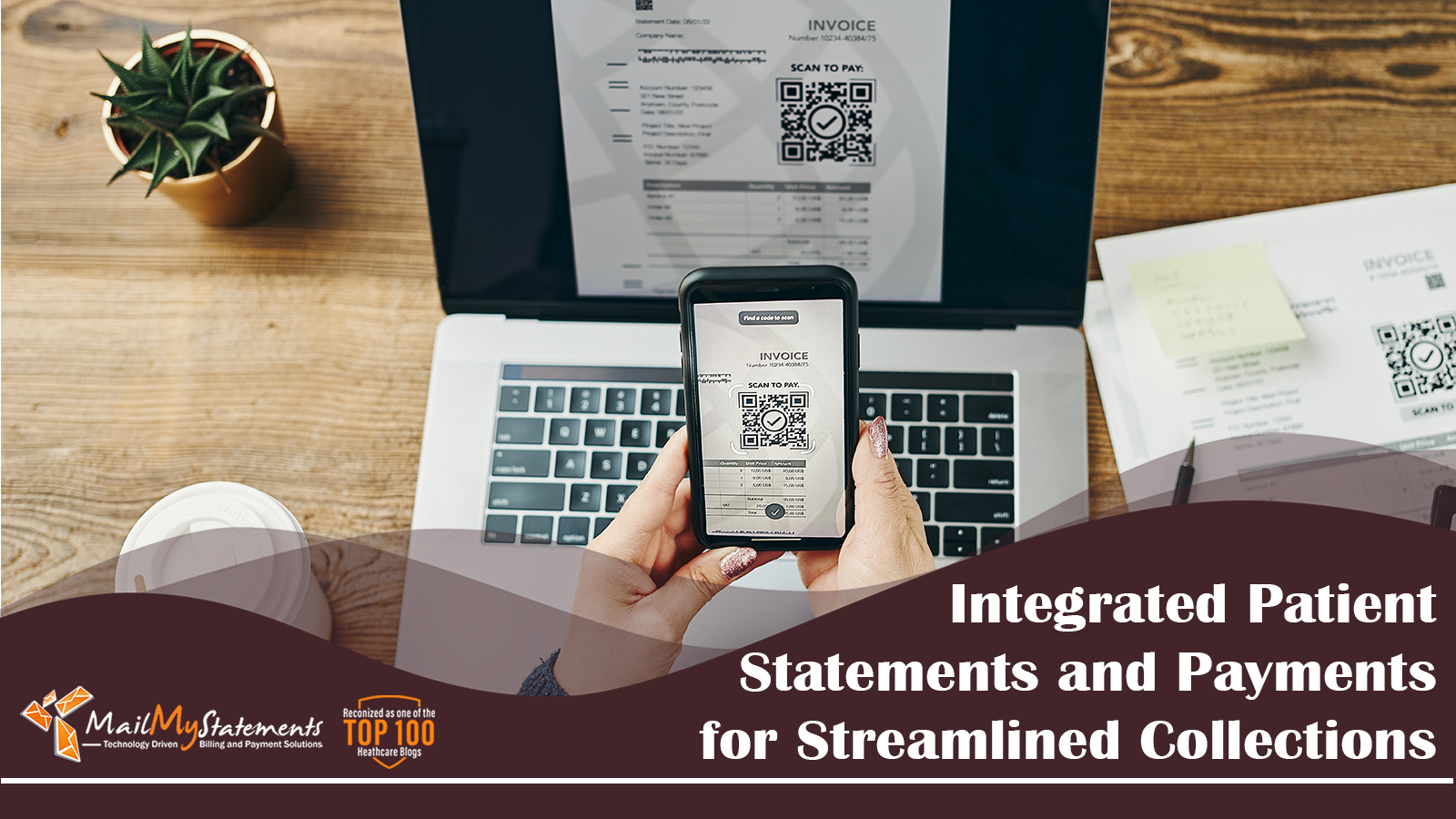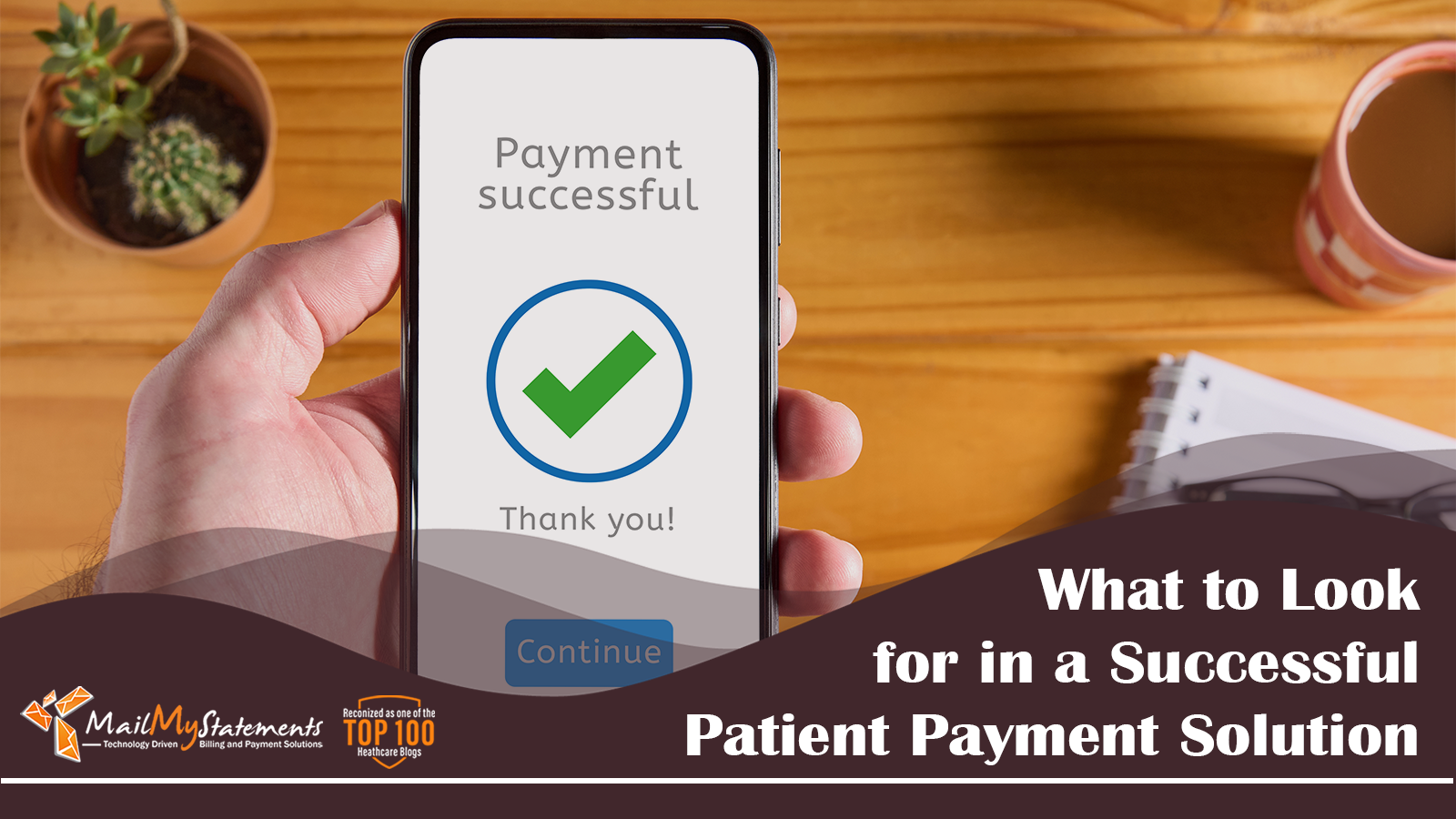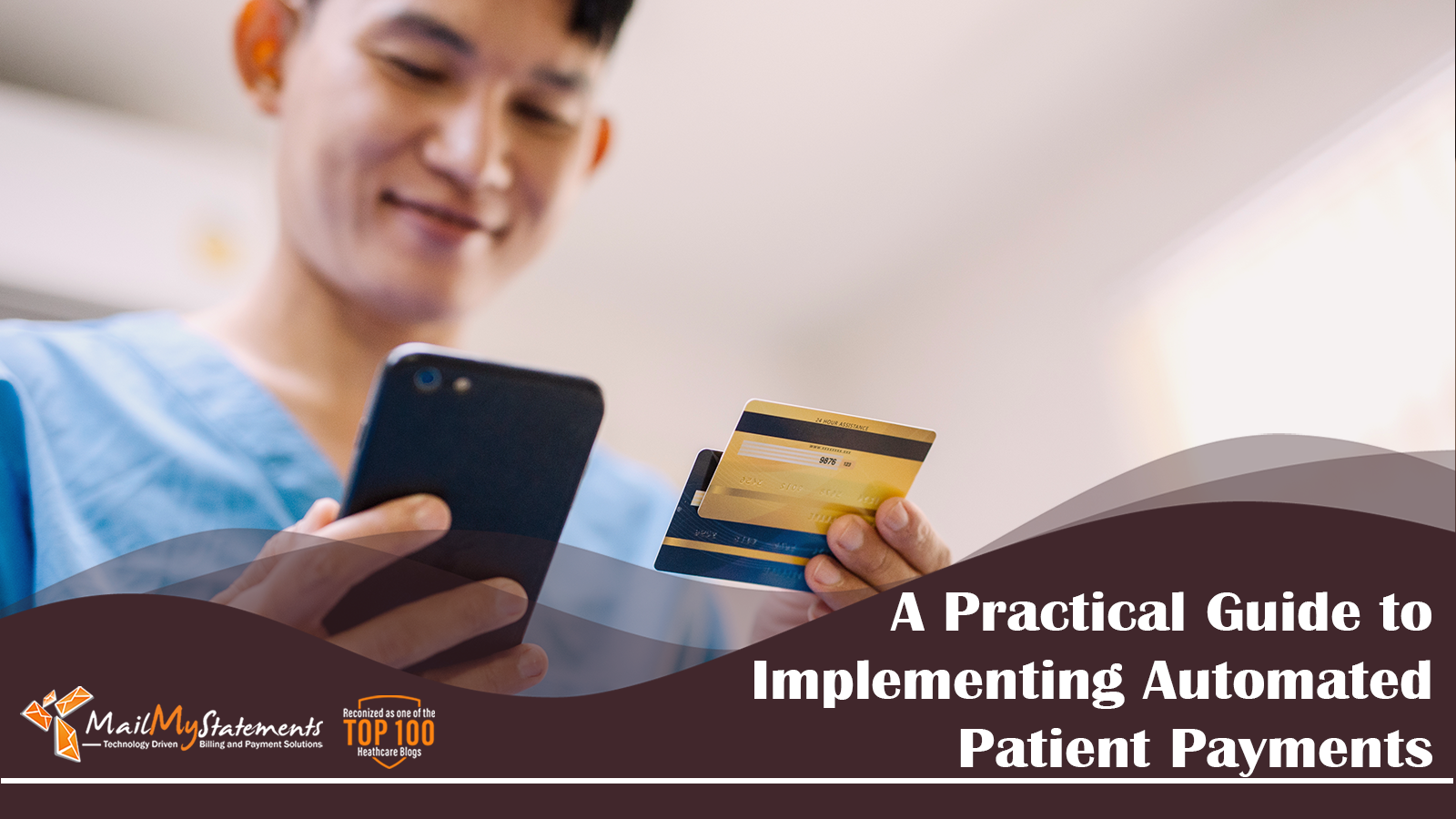Integrated Patient Statements and Payments for Streamlined Collections

With digital technology becoming the norm in healthcare billing and collections, many providers are investing in an integrated patient statements and payments system that offers additional benefits such as maximizing efficiency, collecting revenue faster, and meeting the skyrocketing demand for services.
Adapting to meet today’s patient needs means it’s finally time to investigate ways to automate and streamline payment processes. When re-strategizing your billing process and the patient payment experience, consider an integrated patient statements and payments system between your third-party billing service and a well-established payment processor.

Online Payments Are Here to Stay
Even before the COVID-19 pandemic reached the U.S., the number of Americans using online and no-touch payments was already growing steadily. According to a survey, 27% of small businesses in the U.S. reported seeing a rise in customers paying with no-touch payments since the pandemic began forcing shutdowns in late March. In a similar study, one-third of payers reported trying low- or no-contact payments as a result of the pandemic, with nearly 25% saying they will continue to use these methods after social distancing is behind us.
Pandemic-era habits that have formed to accommodate social distancing, increased sanitation, and other safety concerns will likely become permanent across most industries. For the medical industry, these habits and accommodations have revolved heavily around the transition to virtual appointments and minimizing points of physical contact. As such, no-touch payment acceptance options have risen in popularity among both patients and providers as they eliminate unnecessary contact and search for solutions to collect payments more quickly.
The Benefits of an Integrated Patient Statements and Payments System
With a myriad of telehealth technologies at healthcare providers’ disposal, a seamless and efficient online billing process can help collect payments faster, improve the patient experience, and ultimately make hospitals and private practices more resilient to fluctuations in visit count.
Online medical billing systems and no- or low-touch payments can help providers maintain a steady revenue stream. The single integration can also help promote recurring billing with Account Updater, which allows providers to support customized payment plans by automatically updating outdated card information. Instead of manually entering data, a fully integrated online payment solution can apply automatic reconciliation capabilities while reducing errors that can result from human data entry.
On the provider end, finding an integrated patient statements and payments system that distributes bills to your patients and processes their payments means a one-stop-shop for revenue collection, patient payment updates, and troubleshooting.
Incorporating an Online Payment Solution into Your Billing Strategy
When choosing which healthcare payment solution is right for your facility or system, look for one that offers a variety of payment options. Popular healthcare payment options that might be the most beneficial to your patient base include:
- Phone Call Payments: With a secure payment gateway and integrated online billing tools, a pay-by-phone option offers a no-touch payment solution. Providers can safely process payments by giving billing staff a secure place to key in payment information, including card numbers, expiration dates, security codes, and patient ZIP codes.
- Desktop Payments: The gateway used for phone call payments can also be used to help patients make payments remotely using a web browser on a personal computer.
- Mobile Wallet: Adopting mobile wallet payment options like Android Pay or Apple Pay can also help patients make payments quickly online or in-person using scan-to-pay software.
After analyzing your patients’ needs and listing out the online billing methods that you want to prioritize, consider how best to integrate these methods into your billing strategy and analyze what tweaks need to be made to accommodate your new online medical billing solution. Questions to ask yourself and your accounts receivable team include:
- How should you train billing staff to use and process these online payments and to safely handle sensitive billing information?
- What changes need to be made to your paper statement format? Do you need to add space to explain payment options or develop a separate insert to send along with medical bills?
- How will you communicate these new payment options to your patients?
Many online medical billing providers partner with payment processors to offer healthcare providers online billing and a payment integration in one single solution. These partnerships create a smooth and secure payment experience for patients and providers alike.
Evaluating and Addressing Security Concerns

In addition to seeking out variety, healthcare providers should look for solutions that back their payment acceptance technologies with multiple layers of advanced security technologies such as tokenization and point-to-point encryption.
Tokenization disguises sensitive payment data by replacing it with a randomly generated code known as a token. This “token” is used as a stand-in for one specific byte of information and is, therefore, “assigned” to your personal card data. Tokenization gives providers a simple and secure way to store cards on file, so patients don’t need to enter their information for each of their online payments.
Point-to-point encryption (P2PE), simply refers to the process where card data is immediately coded into a hidden language as soon as a credit or debit card is swiped, dipped, keyed or tapped. From the point of payment, across a network, and eventually arriving at a secure location, the code can only be read by those who have the decryption code or password. The decrypted card information is then sent to the bank for processing.
Point-to-point encryption is used in in-person transactions or phone transactions, whereas tokenization works for card-on-file payments, recurring online payments, and storing customer data across multiple locations. Any integrated patient statements and payments system you choose should also include full lifecycle transaction reporting and feature end-to-end technical support.
In addition to protecting data, tokenization and P2PE also allow healthcare providers to remove internal networks from the scope of PCI compliance audits which reduces the complexity and cost to maintain PCI compliance. PCI compliance is simply a set of requirements that all companies who process, store, or transmit credit card data should adhere to ensure cardholder safety. While these requirements are not mandatory by law, companies should follow these regulations to avoid hefty non-compliance fees that can be charged in the event of a data breach.
MailMyStatements and Clearent Offer Online Payment Integration
Now more than ever, it’s critical for healthcare providers to adopt solutions that will help them operate more efficiently and protect staff while collecting revenue. When combined, online medical billing and payment solutions can play a role in both.
MailMyStatements and Clearent, a leading payment processor, have partnered to offer an integrated patient statements and payments solution designed to help healthcare providers simplify operations, promote wellness, and increase revenue. Click here to learn more.
LEARN MORE ABOUT HOW OUR SOLUTIONS CAN SAVE YOU TIME AND MONEY!
![]()



